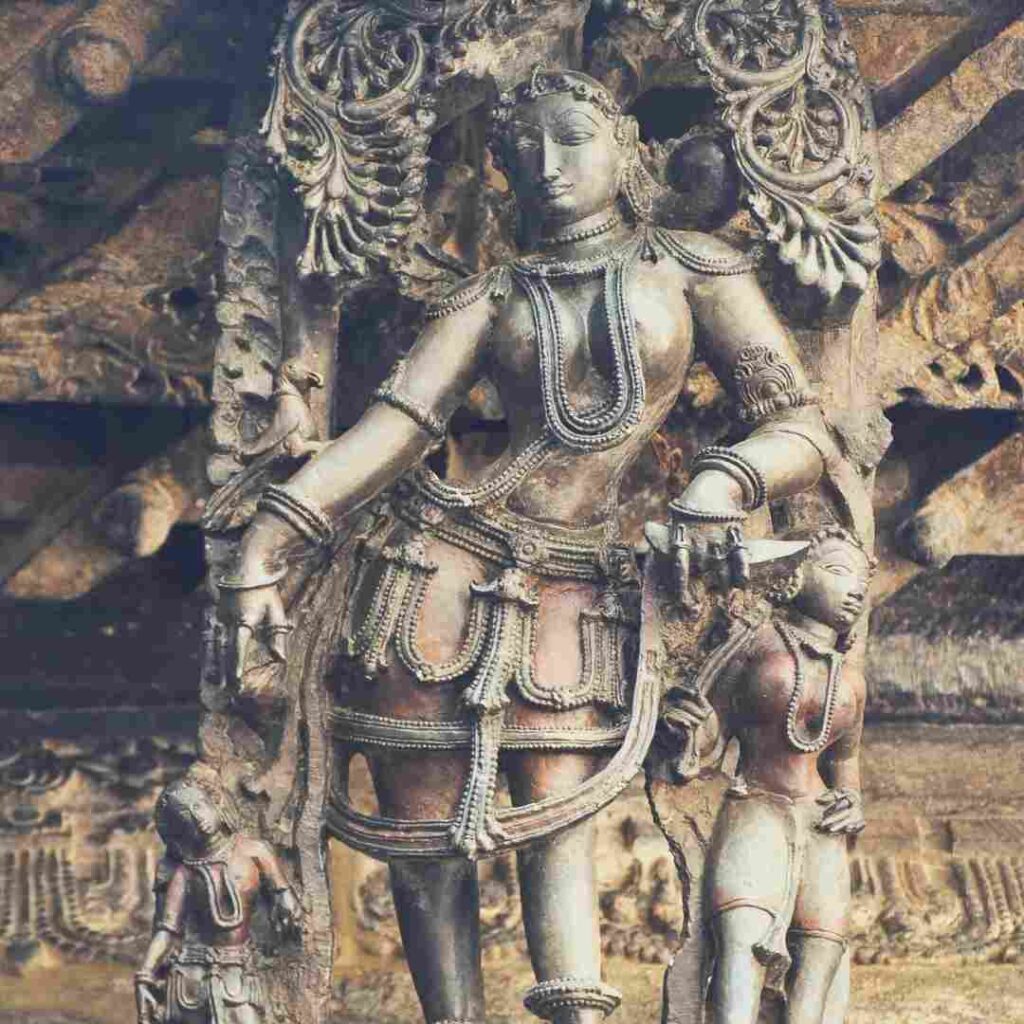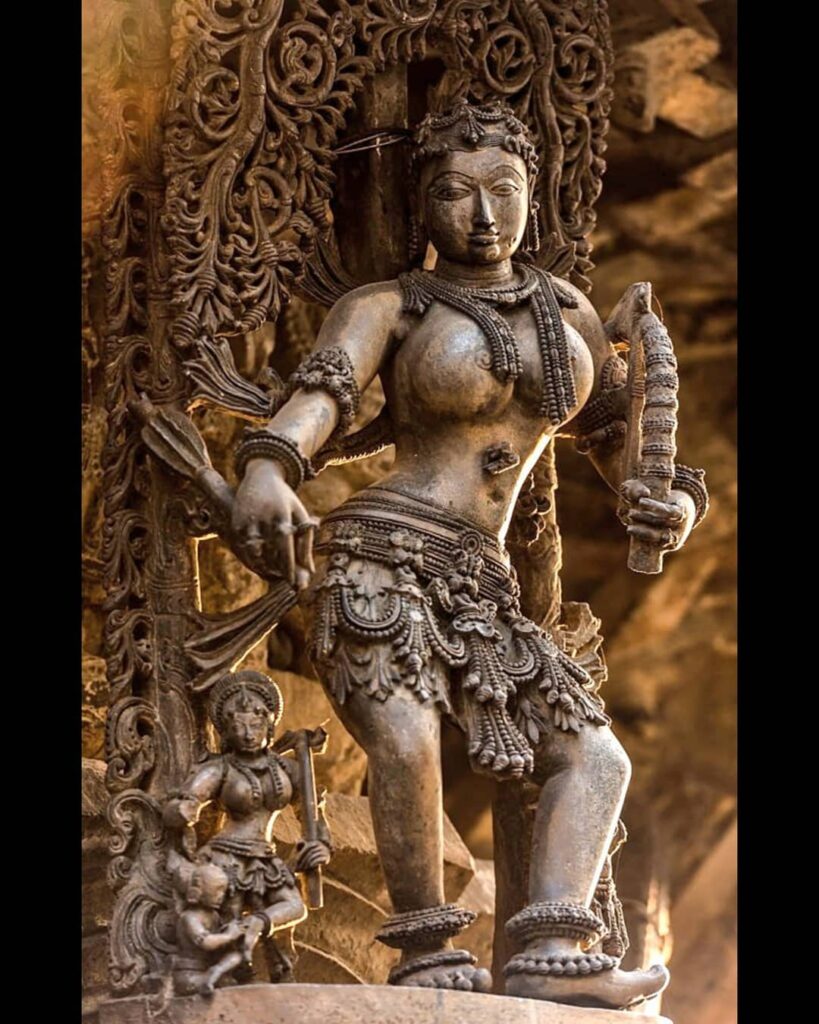The Chennakesava Temple in Belur, Karnataka, India, is a true architectural marvel, renowned for its intricate and exquisite sculptures. Among the temple’s many sculptural wonders, the shalabhanjika or madanika figures are particularly captivating, capturing the imagination of art enthusiasts and scholars alike. These bracket figures, carved in stone, offer a glimpse into the rich artistic and cultural traditions of the Hoysala period.
The Shalabhanjika in Indian Art and Literature

The term “shalabhanjika” or “salabhanjika” has a multifaceted history in Indian art and literature. In Buddhist art, the shalabhanjika typically depicts a female figure, often a yakshi, standing next to or holding a tree, commonly associated with the birth of the Buddha under the sala tree. In Hindu and Jain art, the shalabhanjika has a more general meaning, referring to any sculpted female figure that breaks the monotony of a plain surface, enlivening the space.
Beyond its artistic significance, the term “shalabhanjika” also appears in Indian literature, where it can signify a doll, a fairy, or even a seductress, depending on the context. In the realm of poetry and music, the shalabhanjika is synonymous with the pathyā meter, used for poetic transitions.
Shalabhanjika Sculptures at the Chennakesava Temple
The Chennakesava Temple, built during the Hoysala period (1026 CE – 1343 CE), boasts a remarkable collection of shalabhanjika sculptures. These bracket figures, carved in stone, adorn the temple’s walls, pillars, and various architectural elements, adding to the overall grandeur and aesthetic appeal of the structure.
Sculptural Styles and Themes
The shalabhanjika sculptures at the Chennakesava Temple display a wide range of styles and themes. Some depict the classical, serene pose of a woman holding or breaking a branch, reminiscent of the Buddhist tradition. Others showcase more dynamic, sensual poses, reflecting the Hindu and Jain interpretations of the shalabhanjika.
Many of the sculptures also incorporate intricate floral and vegetal motifs, further enhancing the richness and complexity of the Hoysala artistic expression. The attention to detail and the mastery of the sculptors are evident in the delicate features, graceful postures, and the harmonious integration of the figures with the architectural elements.
Significance and Symbolism

The shalabhanjika sculptures at the Chennakesava Temple hold profound symbolic and cultural significance. They are not merely decorative elements but rather reflect the deep-rooted traditions and beliefs of the Hoysala people. The figures may be associated with ancient tree deities, fertility, or the birth of the Buddha, depending on the specific context and interpretation.
Moreover, the presence of these sculptures within the temple’s sacred space suggests their role in rituals, festivals, and other cultural practices. They serve as a testament to the artistic brilliance and the enduring influence of the Hoysala artistic tradition.
The Chennakesava Temple: A Masterpiece of Hoysala Architecture
The Chennakesava Temple in Belur is not only renowned for its shalabhanjika sculptures but also for its exceptional Hoysala architectural style. The temple’s intricate carvings, elaborate ornamentation, and harmonious integration of various sculptural elements showcase the exceptional craftsmanship and creativity of the Hoysala artisans.
The temple’s layout, with its multiple shrines, pavilions, and ornate gateways, reflects the sophisticated planning and attention to detail that characterized the Hoysala architectural tradition. The use of materials such as soapstone and the incorporation of Hindu, Buddhist, and Jain motifs further demonstrate the cultural diversity and artistic synthesis that flourished during the Hoysala period.
Conclusion
The shalabhanjika sculptures of the Chennakesava Temple in Belur are a remarkable testament to the artistic genius and cultural heritage of the Hoysala period. These captivating bracket figures, with their intricate details, graceful poses, and symbolic significance, invite visitors to delve into the rich tapestry of Indian art and literature.
As we explore the shalabhanjika sculptures, we gain a deeper understanding of the multifaceted roles these figures played in the religious, cultural, and artistic expressions of the Hoysala people. The Chennakesava Temple, with its impressive collection of shalabhanjika sculptures, stands as a testament to the enduring legacy of this unique artistic tradition, offering a window into the brilliance and sophistication of Hoysala art and architecture.
Perspective through video
